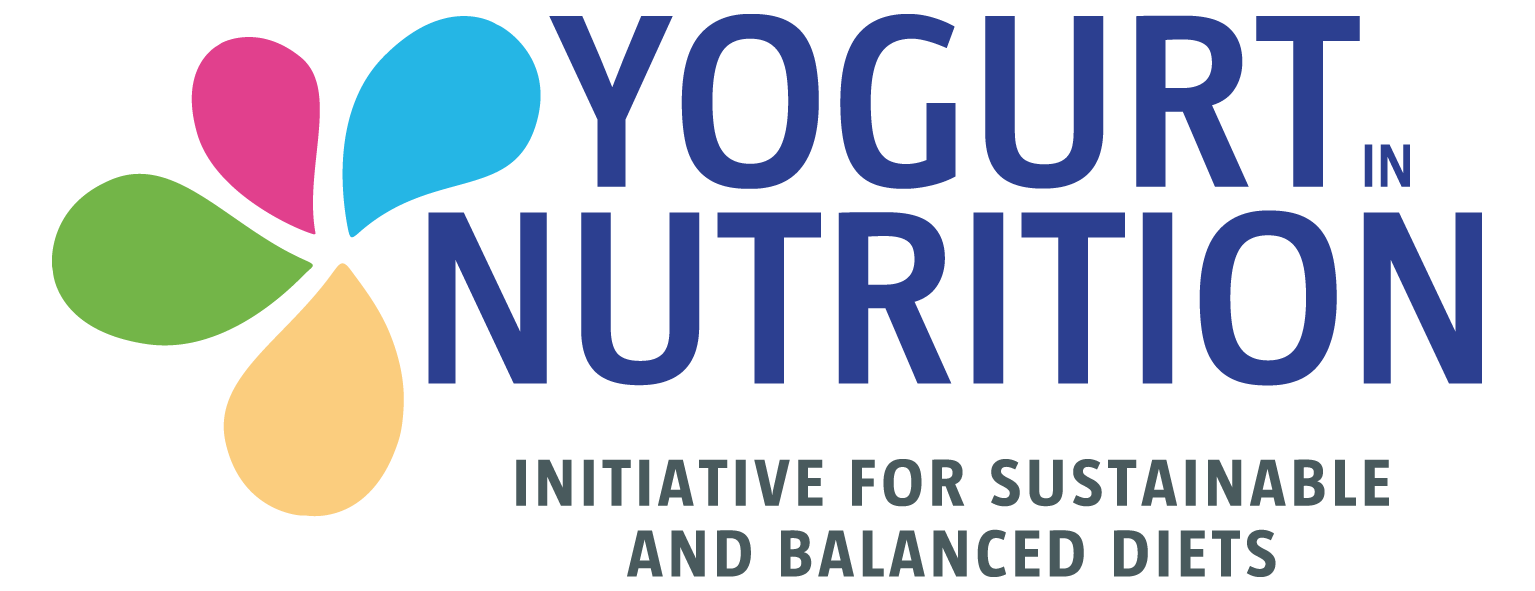Yogurt: an easily adoptable & healthy eating habit
According to Azmina Govindji, a smart way to move towards a healthier diet trough the lifecycle is to eat nutrient-dense foods that are high in vitamins and minerals, but low in calories. Yogurt is a good example of such a habit. Actually, swapping out regular foods for yogurt can easily help to reduce energy intake and provide an increased portion size within the same calorie content. Some good examples are coming from substituting a granola bar or a dessert for a plain yogurt, a can of sugared drink or fruit juice for yogurt smoothie, or enjoying frozen yogurt instead of an ice cream bar. High protein foods, like yogurt, can also promote more satiety than their swapping alternatives. Therefore, yogurt, including sweetened yogurt, can be a potentially satisfying snack for people of all ages and activity levels to get more nutrients.
A component of a balanced diet
Nutrient-dense and low energy-dense food choices, such as yogurt, can help people to meet nutritional requirements, said Govindji. Many national guidelines recognize dairy products as being an essential part of a balanced diet (2-3 per day or more), primarily to facilitate required daily intakes of calcium. US Dietary Guidelines 2015 advise on a shift to consuming more dairy products in nutrient-dense forms, recommending low-fat yogurt rather than cheese. The UK Eatwell Guide graphic portrays plain yogurt as a daily source of dairy foods. Spanish and Turquish Food-Based Guidelines both recommend to consume milk and dairy products, including yogurt every day. Last but not least, recent scientific studies amongst international cohorts, that followed people’s eating habits over the course of several years, appear to point towards a similar correlation: yogurt consumers are likely to have a healthier dietary pattern.
Yogurt is more than a snack and a dessert
Yogurt can be eaten at any time of the day, making it a versatile pleasure and a habit, which can be easily integrated into our daily lives. For example, in the United States yogurt is often consumed in the morning for breakfast, and 25% of consumers use yogurt as a cooking ingredient. While in France, more than 80% of yogurts are eaten at lunch or dinner. However, Brazilians often prefer to consume yogurt as a snack. As there exist different moments and options to integrate pleasures, such as yogurt, into our lives, instilling healthy eating habits can become both simple and enjoyable.
Govindji concludes that yogurt may provide nourishing swaps throughout the day and is a marker of diet quality.
Highlights
- As a low energy-dense food, yogurt may help to reduce energy intake.
- Yogurt may also provide an increased portion size within the same calorie content and can be a potentially satisfying snack to get more nutrients every day.
- Many national guidelines recognize dairy products, like yogurt, as being an essential part of a balanced diet.
- Moreover, several studies have linked yogurt to a healthier diet and improved long term health outcomes.





